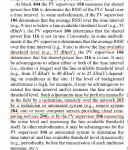....Back to the OSI model ...
Recall that the "bottom" of the OSI model is very low level, so it's completely appropriate to start well above the physical layer, and to stop short of the application layer. SunSpec sits on the boundary between the media layers and the host layers. SolarEdge, for example, provides standard RS-485-based Modbus communication to their inverters (or they did). When I was writing data logger firmware my goal was to provide TCP/IP-based Modbus. Then I left SolarBridge and ran off to Draker because they had much bigger projects -- the largest was 23MW. These days I do industrial controls.
OK, I got that.
What I still have to get my head wrapped around on-- is: the initial [start] “WELL ABOVE” the physical layer that you claim.
How far up the ladder would you start before reaching the Destination Address Information Layer, which is the topmost Application Layer.
From the bottom (lowest) least intelligent ladder, you would have to negotiate five layers i.e.
Data Link, Network, Transport, Session and Presentation before you can communicate with the most intelligent Application Layer.
During the programming phase, you will need to pick which layer you would have to start to make sure you are able to establish communication.
With so many protocols coming out of the wood works--it seems you would need to focus on your target to be able to communicate flawlessly.
As an example, let’s take the Modbus Plus protocol from Schneider Electric. This protocol is different from the old generic Modbus.
They created their own proprietary systems (Modbus+) that will only recognize hardware that they designed from their R & D laboratory.
They also use the serial interface.
In other words they are saying:
“you use our systems with the peripherals that we made to make things work.“

Other PLC manufacturers use the TCP/IP protocol which is considered the de facto standard.
This was based on the relay logic. (coil and NO NC contact)
Front line technicians already have the basic understanding of this system.
So, only minimal hand holding mentoring is necessary.
FWIW:
I trained with the Modicon engineers during the early introduction of Programmable Logic Controllers (PLC)
Modicon was the brand name by
Gould Electronics Inc. for their PLC products before the company was acquired by Schneider Electric. Actually the company changed hands from Japanese owned to Chinese to German. Only when they got involved with military projects that they reverted back to US ownership. They were forced to sell their foreign assets because of the DOD “buy American” policy.
Although Schneider is not US wholly owned --some divisions are still under the “buy American” material acquisition requirement.
The MODBUS nomenclature stuck even after acquisition.
MODICON is where MODbus got its name.
So much for histrionics.
Have a nice day.



